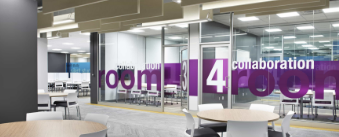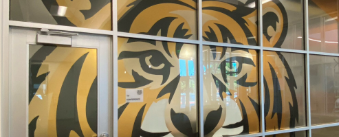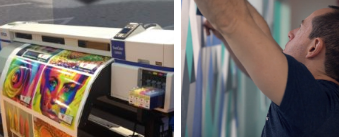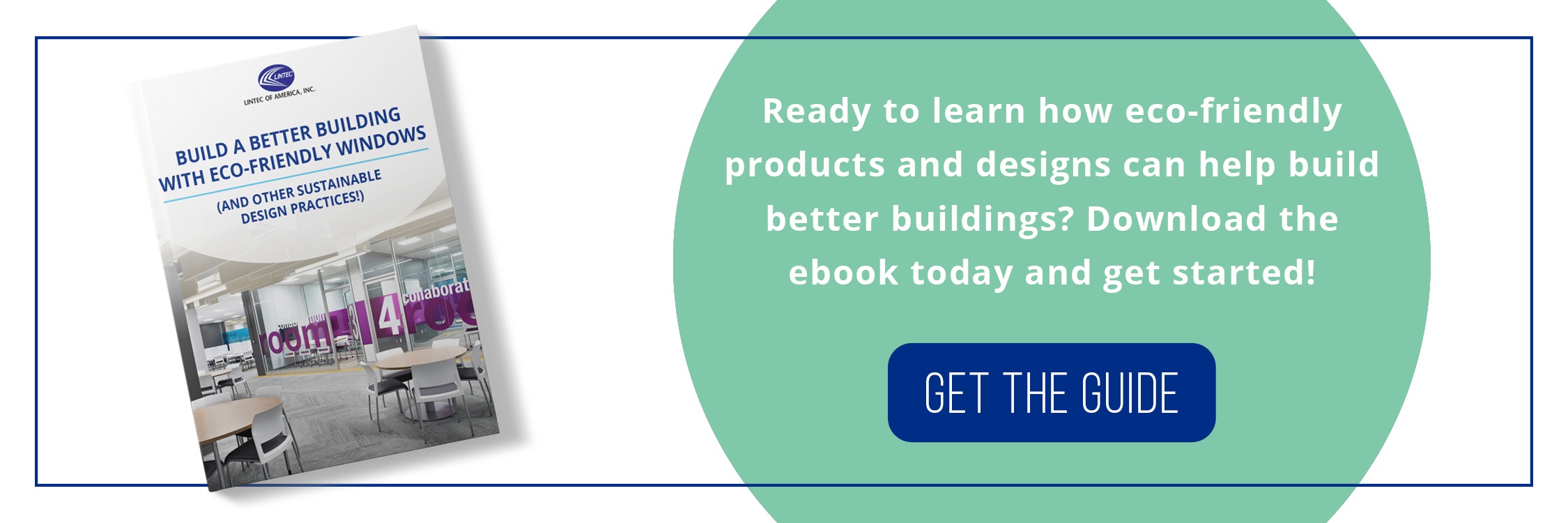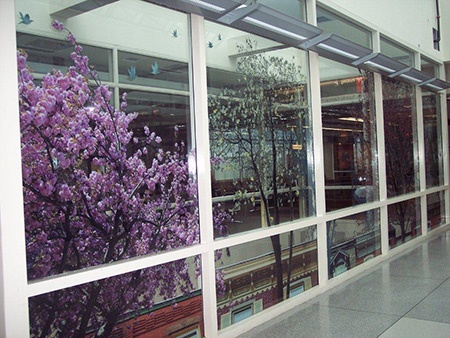
These days, sustainable architecture and design are at the forefront of most new building projects. Gone are the old days of using as much wood, steel, and concrete as possible. Now, eco-friendly decor and materials are essential for creating client satisfaction and adhering to new LEED standards.
As an architect, you may know the basics of how to turn your next project "green." However, we've compiled the top green design ideas you can incorporate to give your plans that extra "wow" factor. Let's dive in.
Utilize Glass Walls and Partitions
As a rule, glass is a much more eco-friendly building material than concrete, steel, or wood. Even if you're not talking about recycling glass itself, it doesn't harm the environment by releasing chemicals or waste byproducts.
It makes sense to use as much glass as possible when designing your next building. But, the green benefits go well beyond the material, such as:
- Natural Lighting - More glass lets in more sunlight, and it's easy to manage the sun with window tints and shades.
- Aesthetics - Glass walls improve visibility throughout a space and allow employees to feel like they're in an open-concept environment while still allowing for some privacy.
Focus on Low-Maintenance Materials
Going green doesn't just mean using environmentally-friendly materials and building codes. One way to reduce a building's carbon footprint is to lower the maintenance it needs, both inside and out.
For example, while carpeting can feel soft and accommodating, it collects dirt and requires constant upkeep. By comparison, concrete floors with laminate coatings are much more durable and need much less maintenance.
Overall, the more resilient materials you use in a building, the less custodial work is necessary to keep it looking pristine. As a result, fewer chemicals and cleaning equipment are required for daily operations.
Let Nature Work For You, Not Against You
Nature has an answer to everything if you know where to look. There are multiple ways to incorporate natural elements into your architectural designs, such as:
- Natural Lighting - As we mentioned, glass walls and large windows allow a building to utilize as much sunlight as possible, reducing the need for electric lighting.
- Natural Ventilation - Tall buildings get a lot of wind, so you can capture this airflow and distribute it throughout the building rather than relying on fans and motors.
- Interior Plants - Plants help scrub the air of pollutants and CO2, making the air cleaner and fresher. So, incorporating planters and built-in gardens can reduce the need for air filters and cleaning agents.
- Solar Power - Sunlight is good for both lighting and energy. Best of all, solar panels can be deployed in multiple spots to reduce a building's energy consumption.
Create Mixed-Use Spaces
One unconventional green design idea is to ensure that the interior of your building is versatile and accommodating to a wide selection of businesses. For example, if you only design a space to be used for offices, you're limiting the type of tenants who can rent it.
Mixed-use spaces are eco-friendly because they ensure the building works as efficiently as possible. Plus, these spaces often require fewer materials and construction, lowering the environmental impact of the initial development.
Eliminate Waste Whenever Possible
When you think about it, "going green" ultimately means "eliminating waste." So, sustainable architecture and design should take that mantra to heart. Some ways to achieve net-zero waste include:
- Water Reclamation - If your project is in an area with a lot of rain, you can collect that water and recycle it throughout the building.
- Wind Turbines - As we mentioned, high-rises experience lots of wind, so why not put it to good use? Interior turbines can help power individual offices and floors.
- Climate Sustainability - Much of a building's energy is used to combat the climate outside of it. For example, A/Cs running in the summer and heaters in the winter. However, if you can use the region's natural environment to keep the interior comfortable, you can cut down on electricity usage and reduce tons of wasted energy.
Use Recycled Decorative Films From LINTEC of America
Products made from recycled materials are essential when designing a "green" building. Fortunately, LINTEC of America offers recycled window films that deliver the same results as non-recycled materials. While these products are only one part of a larger project, they can help with LEED certification and waste reduction. Contact us today to find out more.
